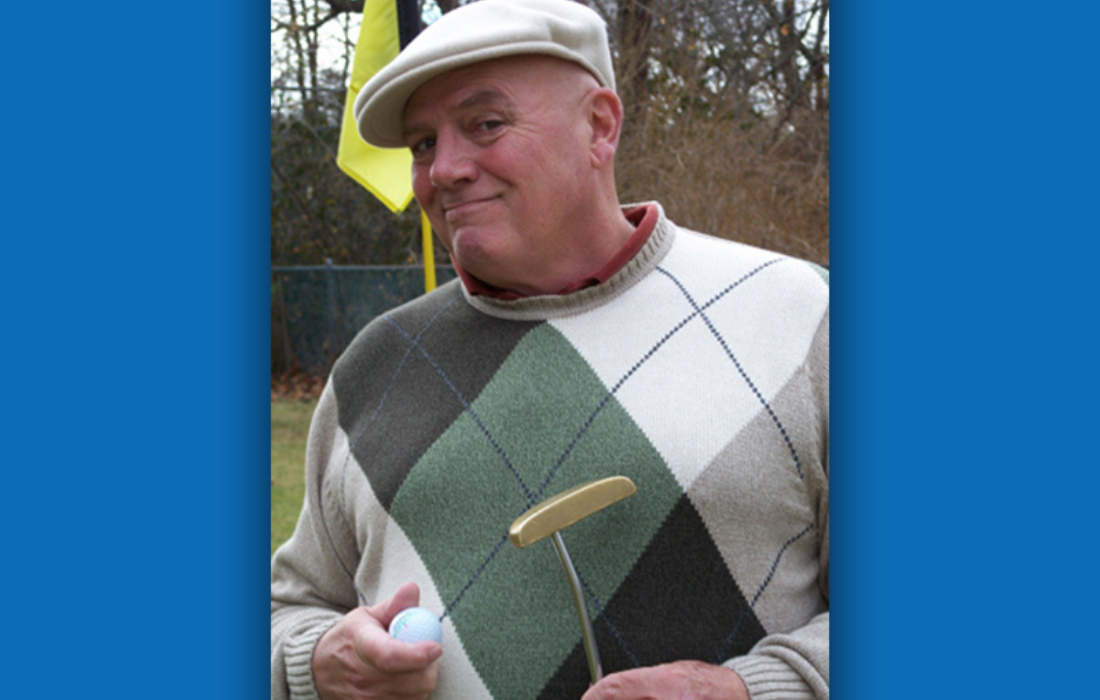Patient Gets Back into the Swing of Things After Total Shoulder Replacement Surgery

Duncan Kennedy is a self-proclaimed diehard golfer. So when the 65-year-old retired law enforcement official from Neptune, New Jersey, found his chronic right shoulder pain significantly affecting his swing, not to mention his life in general, he chose to do something about it. In August 2010, he underwent total shoulder replacement surgery, performed by Dr. Christopher Doumas of University Orthopaedic Associates (UOA).
“I guess I have a pretty high tolerance for pain, but it got to the point where it was getting worse and making me more careful. I developed a habit of keeping my right hand in my pocket, so that if I had to reach for something, I’d do it with my left hand,” recalls Duncan. “It also had an impact on my golf game. I had to alter my mechanics, so I wasn’t doing things the correct way and not playing very well at all.”
When Duncan was deciding on an orthopaedic specialist, he read an article in a Meridian Health System publication about golfing and shoulder surgery. It was written by Dr. Doumas and Duncan knew he’d found the right man for the job.
His relationship with Dr. Doumas actually began a few years prior to his joint replacement, with such conservative treatments as medication, physical therapy and cortisone injections to relieve his discomfort. In 2008, Dr. Doumas did arthroscopic surgery on Duncan’s shoulder to clear the joint of damaged tissue and loose body matter. The minimally invasive procedure uses just a few small incisions to insert a camera and other tools that enable the surgeon to both view and treat the inflamed area.
After his arthroscopy, he was pain free and saw Dr. Doumas every three months for monitoring. Eventually the ache returned and progressed, and they both agreed it was time for a more permanent solution. Duncan’s joint procedure was done at Jersey Shore University Medical Center and employed the Biomet system, which Dr. Doumas explains can be used for total, partial and reverse shoulder replacements due to its interchangeable and adjustable components.
“It also includes a micro stem that reduces bone removal, and the parts are coated with a plasma spray that requires less cement. Both these design elements are great for younger patients such as Duncan, because they make possible future revisions much easier to do,” says Dr. Doumas, who has been with UOA since 2007 and has special expertise in hand and upper extremity care.
While Duncan’s surgery took a little longer than the standard three hours to attend to his extensive arthritis, it was followed by the usual post-surgical protocol: wearing a sling for one week, then six weeks of supervised physical therapy, then two months of strengthening exercises. “We want the patient to first gain back range of motion before focusing on joint strength. What’s great about this procedure is that improvement can continue up to a year afterward,” Dr. Doumas points out. “Duncan now has full motion and no pain or stiffness. I had to yell at him for pitching and putting at just six weeks!”
“I’m crazy, but I’m not stupid!” Duncan laughs in response. “I proceeded gradually.
“Everyone at the hospital was wonderful, my physical therapist was outstanding and encouraging, and Dr. Doumas really knew what he was doing. Within a few days of my surgery, I sensed a change for the better and even went on milder pain medication,” he adds. “I couldn’t be more pleased. Today I have no problems with my shoulder. I’m hitting the ball well and getting good results on the golf course.”
“Most people are familiar with hip and knee replacements, but don’t know about the benefits of shoulder replacement,” notes Dr. Doumas. “For older patients with severe pain, as well as younger active patients with a good deal of discomfort and restricted motion, it’s an excellent option.”
UOA Takes Care of All Orthopaedic Needs
When it comes to treating any type of orthopaedic problem, UOA specialists have the necessary skills and expertise, along with great compassion for patients. Duncan Kennedy knows this firsthand. While seeing Dr. Doumas regularly for his right shoulder, he began losing sensation and experiencing weakness in his left arm and hand. An MRI showed both nerve root and spinal cord compression in his neck, which required cervical spine surgery to remedy the numbness and discomfort.
Extremely satisfied with the care he already had received at UOA, Duncan opted to have the practice’s Dr. Gino Chiappetta perform his procedure. In May 2009, at Robert Wood Johnson Medical Center, Duncan underwent an anterior cervical and fusion. “We approach the spine from the front of the neck through a small incision. Then we remove the discs causing the compression—there were two in Duncan’s case—and insert spacers where the discs were, securing them with a titanium plate and screws,” explains Dr. Chiappetta, who specializes in spine and orthopaedic trauma. “The goal is to relieve the pressure from the spinal cord and nerves. For most patients, it’s a same-day surgery. It’s pretty delicate, but the success rate is upward of 90%, the complication rate is low and blood loss is minimal. Duncan had a great resolution.”
“I immediately felt better after my procedure,” Duncan says. “Spine surgery can be a very frightening prospect, but it was quick and it went smoothly. Dr. Chiappetta was great and now I have trouble finding the incision since it was so small!”
Contact University Orthopaedic Associates to find out more about your prospects of playing golf after a shoulder surgery.

